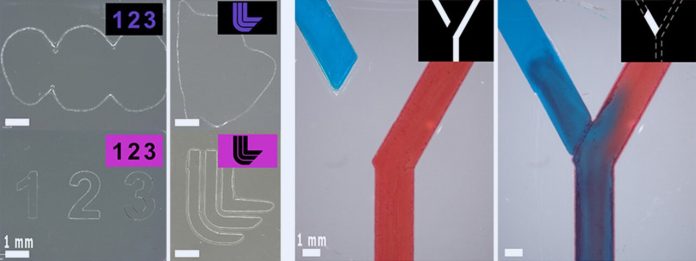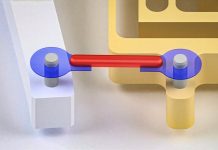
Traditional 3D printing works in only one direction: you add material layer by layer, and once something is printed, it stays that way.
If a part is wrong or incomplete, the entire object usually ends up discarded.
But scientists at Lawrence Livermore National Laboratory (LLNL) have created a new resin that changes the rules.
This material allows a 3D printer not only to build objects, but also to un-build them—letting users erase mistakes, reshape parts, and recycle printed material.
The new work, published in Advanced Materials Technologies, introduces a hybrid additive and subtractive manufacturing system.
The magic lies in a specially designed resin that reacts differently depending on the color of light it is exposed to.
When the material is hit with blue light, it hardens and becomes a solid structure. When exposed to ultraviolet light, it breaks down and returns to liquid form.
This means a printer can build an object and later modify or even “undo” specific areas with the right wavelength of light.
LLNL scientist Benjamin Alameda explains the benefit clearly: companies often print prototypes but do not know in advance how the final part should look.
With this resin, they can print a piece, evaluate it, and then correct small errors by dissolving just the flawed part of the structure instead of starting over. This saves time, materials, and cost.
To show the system in action, researchers printed a device containing two fluid channels that were intentionally left unconnected.
Normally, such an error would require reprinting the entire object. But using ultraviolet light, the team simply degraded the small section of resin between the channels, removed it, and then allowed the channels to connect properly. The once “broken” part became fully functional again.
This new resin technology, now patented, is available for licensing. It can be used with existing light-based 3D printers to improve resolution, create more detailed structures, smooth surfaces, correct mistakes, and recycle parts.
The resin’s chemistry is key to its performance: blue light triggers the molecules to link together into a stable solid, while ultraviolet light generates acid inside the resin that breaks those molecular links, returning the material to liquid form.
The team also ensured the resin stays stable under normal conditions and does not break down when exposed to everyday sunlight.
Looking ahead, the researchers plan to make this hybrid manufacturing even smarter. They aim to integrate sensors and automatic feedback systems that detect printing errors in real time and correct them instantly.
They are also working on adapting the method to volumetric 3D printing, a technology that forms entire objects at once inside a rotating container of resin.
This breakthrough opens the door to a new generation of adaptive, repairable, and fully recyclable 3D-printed parts—reshaping how prototypes, medical devices, industrial tools, and custom components are made.



